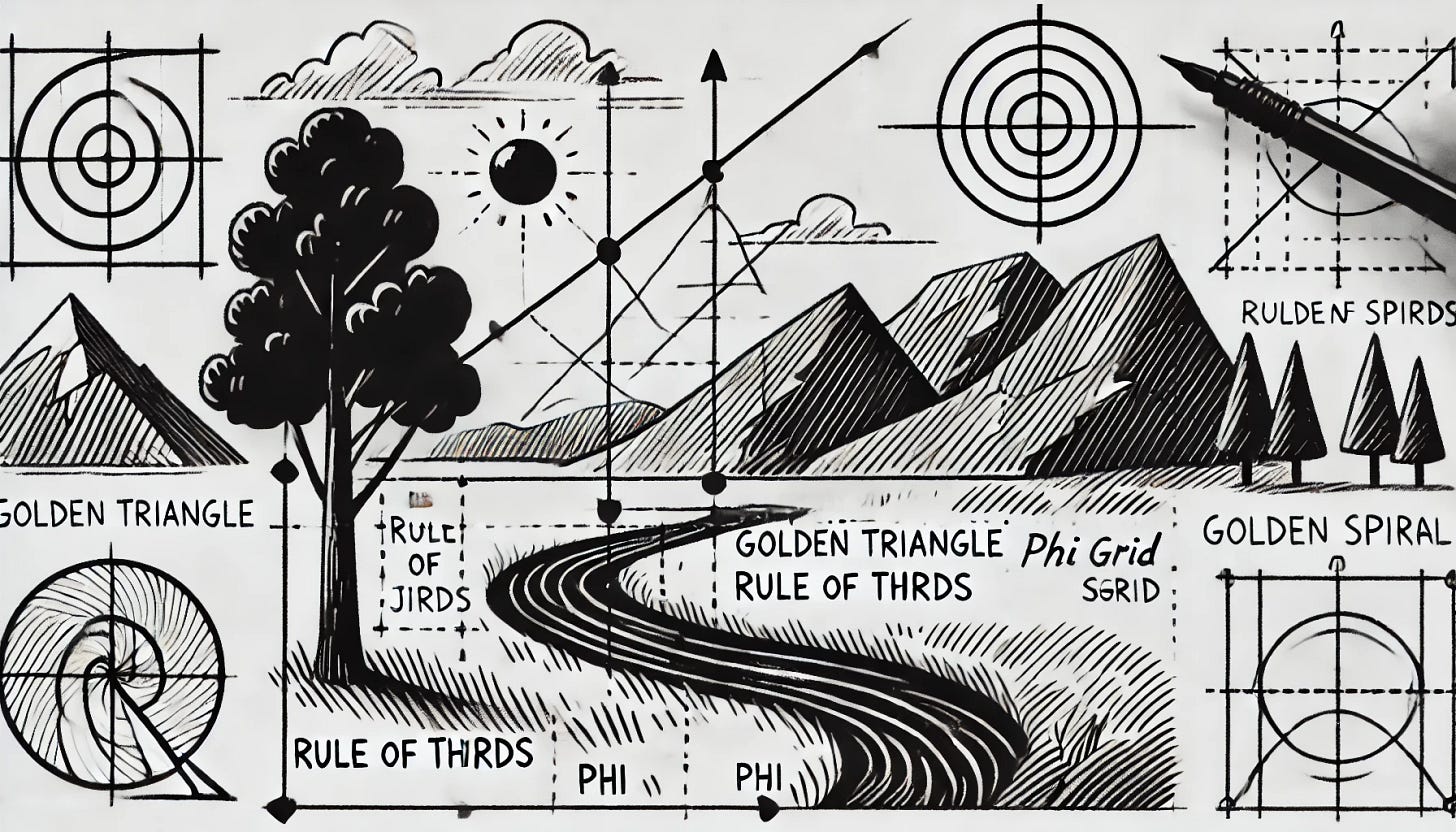New year, new view? We are all coming to terms with the new year in these early days of Jan, if only to remember to write the correct date after 12 months of writing ‘24’. Most of us are naturally drawn to reflect on where we are and where we want to go next.
So Even if I’m trying to resist the knee-jerk resolution reaction, I am setting out some simple goals for 2025, one of which is to focus more consciously on image making, and more specifically, better composition. Composition of images is both the simplest and the most challenging aspect of any art form. For this post I wanted to break my thinking about it and my approach, which will hopefully help you as well as re-focus my minds eye on priorities for composition in 2025.
I’ve used some images from a New Year family trip to Malta as examples.
Technical Approaches to Composition
Most people know about the rule of thirds – where the main subject should be a third of the way into the image, making a ‘pleasing’ balance. Other approaches focus on similar ‘golden ratios’ which are pleasing to the eye. They do work in general, and I use them as a reference point if I’m unsure how to frame something or just to start somewhere! You can try the golden ratio (1.618:1), the Phi Grid, The Golden/Fibonacci Spiral, etc. All in all, they are a great starting point for simple images.
The other ‘setup’ aspect of composition is field of view – how close are you going to get to your subject, is it wide angle or zoomed in? A natural field of view is about 45mm at ‘full frame’ or 35mm film (will vary by lens and system – my XPro3 has a smaller sensor so converts lenses at 1.5, making a 23mm lens equal to 34mm). Longer lens isolate the subject better, wider lenses distort but show a wider context for your image. I tend to stick to my 23mm for most street photography as it doesn’t distort much, but I can get a wide enough view.
Thinking rules
I always think of our brains as shortcut machines – limited attention, memories and awareness, brilliantly knitted together by a system that prioritises in the same way it did when we lived in caves. For vision, we look at one area at a time, our brain stitches it together into a ‘wider’ awareness of our environment.
We focus on movement, we constantly scan our environments for danger, unexpected events, surprising elements. At the same time we create ‘stories’ to explain our environment that creates meaning with limited information. Those first 7 seconds that we form firm opinions in? That’s our storytelling engine in action. Prejudices, pigeon-holing, racism, sexism, Donald Trump, you name it, we can tell whatever story that fits the wiring in our brain incredibly quickly, on limited information and even less thinking time. We can challenge this thinking and rewire those neural pathways with some conscious choices and challenges, but that’s perhaps the subject for another post!
For images this is important because the viewers eye is constantly looking for a path through an image, and can be guided through it. On top of this, the content conveys meaning and suggests stories about what is going on, engaging the brain into a more detailed consideration of the content, and a ‘richer’ experience.

People framing
The composition with people in the frame is the most challenging – firstly they keep on moving! It’s so annoying. Unless you’re in full control of the subject, like portraiture, people can make or break the composition in a moment. One second more or less can make a massive difference. What I struggle with is looking at the image as a composition – a geometrical, aesthetic image – whilst at the same time capturing the social and cultural interest (which is probably what drew you to the image in the first place). This takes practice, so get the composition set up quickly so you can focus on the next level of interest.
One other thing we should consider is that sometimes, waiting is the key element that will make the image turn up. Many photographers tell stories of finding a good shot, but waiting a long time for the one they wanted. Making images sometimes takes just as much patience as skill!
Hidden stories are the best stories
Ultimately, the best images are the ones that make the viewer think, and this needs two elements of composition to be working – a structure that leads the eye around the image (not necessarily smoothly, a ‘break’ or contradiction in the flow can be effective too), and an element of intrigue or unknowableness that will keep the viewer thinking, speculating, revisiting the image. ‘What is he doing?’, ‘Where are they going?’, ‘What does that mean?’. Like any good story, the setup, tension/challenge, and resolution brings the viewer on a journey that does more than just reflect a moment of the world.

That’s my approach to composition – I will expand on this in my next post, looking at how to generate intrigue and mystery in your photos.
Project Inflection
So watch this space for the new project I’m doing with
- each one of us creating an image each month, for the other to respond to and build a narrative in the process. I’ve got the short straw and have to create the first image (and have rather too many ideas!), so will update you all here as work progresses. My focus will be on many of the topics of this post – finding stories in the world that can be composed into an image that keeps you thinking!Until next time…









Good read. Maybe the best photos are the ones where our brains can't take a direct shortcut to figure out what we're looking at ;-)